“Mac” McWhorter runs up the score.

When retired Cdr. Hamilton “Mac” McWhorter III, 87, died on April 12, 2008, at El Cajon, California, the Navy lost one of its great World War II fighter pilots—a hero who inspired many.
Deadly Dogfight
Imagine you’re in a metal shed and someone throws rocks against the outside. That’s what it sounded like when machine-gun fire ripped into my Hellcat. I looked around, and sure enough, a pair of Japanese Zero fighters was right behind me. Tracers were coming at me.
I was the pilot of a magnificent Grumman F6F Hellcat, probably the best fighter of World War II. I was a member of Navy fighter squadron VF-9, operating from the USS Essex (CV 9). We were escorting our carrier’s bombers on a strike to Rabaul, New Britain, in the South Pacific on November 11, 1943. American troops had just landed at nearby Bougainville.
This was a big battle, high over Rabaul, with 100 Zeros and 50 Hellcats fighting one another and planes tumbling all over the sky. When I heard slugs hitting my Hellcat, I wondered if this huge, sprawling dogfight was going to be the last of my brief (so far) Navy career, which had begun shortly before Pearl Harbor. I had never really wanted to kill or be killed, but since childhood, I had wanted to fly. Early aviator I was born in 1921 in Georgia into a middle-class family. I was nine years old when Dad arranged my first flight, in a Ford Tri-Motor. Soon afterward, I saw a fighter plane for the first time. I wanted to fly fighters. I attended college in Georgia, but my real satisfaction came from qualifying for naval aviator training. I was learning to become a Navy pilot when the Japanese attacked Pearl Harbor. In training, I flew the Brewster F2A Buffalo; it was completely inadequate. After pinning on wings and ensign’s bars in 1942, I trained in the Grumman F4F-4 Wildcat. They assigned me to Fighting Nine, or squadron VF-9.
Denne historien er fra 2019 Special Issue: WWII Air War-utgaven av Flight Journal.
Start din 7-dagers gratis prøveperiode på Magzter GOLD for å få tilgang til tusenvis av utvalgte premiumhistorier og 9000+ magasiner og aviser.
Allerede abonnent ? Logg på
Denne historien er fra 2019 Special Issue: WWII Air War-utgaven av Flight Journal.
Start din 7-dagers gratis prøveperiode på Magzter GOLD for å få tilgang til tusenvis av utvalgte premiumhistorier og 9000+ magasiner og aviser.
Allerede abonnent? Logg på

Keeping 'em Flying!- The new generation of warbird pilots, restorers and mechanics
The new generation of warbird pilots, restorers and mechanics. Nearly 80 years after the end of World War II, the fighters, bombers, and trainers that defended freedom continue to enthrall and inspire audiences at airshows, thanks to generations of warbird pilots, maintainers, restoration specialists and collectors. In our September, 2022 issue we introduced you to the young warbird pilots, maintainers and restorers who are already beginning to displace more "experienced" warbird fliers and fixers.

The Corsair Maker- Bringing the Vought Corsair to the fleet was a daunting challenge that spanned nearly three years.
When the first production Corsairs exited the Stratford factory in June 1942, Guyton, as seen here, was tapped to manage the flight and production test program. Armament was improved to six wing-mounted .50s, displacing the wing fuel tanks now placed forward of the cockpit which necessarily was moved rearward by 32 inches. Overall length was increased, armor plate added, landing, arresting and tail gear improved, aileron control enhanced, and a new version of the R2800 engine was incorporated. But those significant improvements unearthed numerous idiosyncrasies that would take an extended period to make the Corsair acceptable for carrier operations
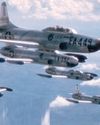
STARFIRES Over Korea
F-94 pilots tangle with MiGs
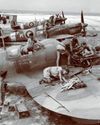
Training Mission
BY THE TIME THIS TRAINING SCENE WAS RECORDED in Canne, Italy, in July 1944, Allied Yugoslavian airmen had several years of experience working side by side with the RAF.
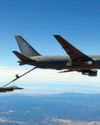
KC-46A PEGASUS
Next generation aerial refueler
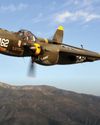
"SATAN'S ANGELS" ACE - Tales from a P-38 pilot in the South Pacific
\"AS A KID GROWING UP on the bow of my father's tugboat, hauling oil from Seattle to Alaska, I had a lot of time on my hands.
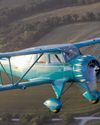
WACO YKC - Stunning and Ultra Rare Golden Age Cabin Flier
BETWEEN THE IMPLEMENTATION of the Air Commerce Act of 1926 and December 31, 1948, all U.S. registered flying machines sported an N-number, much as they do today, the \"N\" being an internationally recognized identifier for the United States. During that period, however, an additional letter-identifier followed the \"N.\" Depending on their category, they were registered in the NC (Commercial), NG (Glider), NL (Limited), NR (Restricted, usually meaning race airplanes), NS (State government), and, finally, NX (experimental).
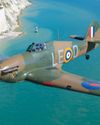
BADER'S HURRICANES
Double amputee fighter ace Douglas Bader and his Battle of Britain Hurricanes
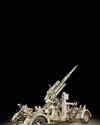
Scourge of the Allied Fighters
IT HAD TO BE THE MOST HELPLESS FEELING in the world: you're at 25,000 feet over Europe knowing that your primary function is to drop bombs-or flying escort for the bombers while being a slow-moving target for some of the world's finest shooters. However, you have John Browning's marvelous .50 caliber invention to give some degree of protection. Unfortunately, you're absolutely helpless against flak. Piloting and gunnery skills play no role in a game where sheer chance makes life and death decisions. For that reason, the Krupp 88 mm Flak 18/36/37 AA cannon could be considered WW II's ultimate stealth fighter. You never saw it coming.
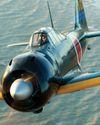
ZERO MYTH, MYSTERY, AND FACT
A test pilot compares the A6M5 Zero to U.S. fighters